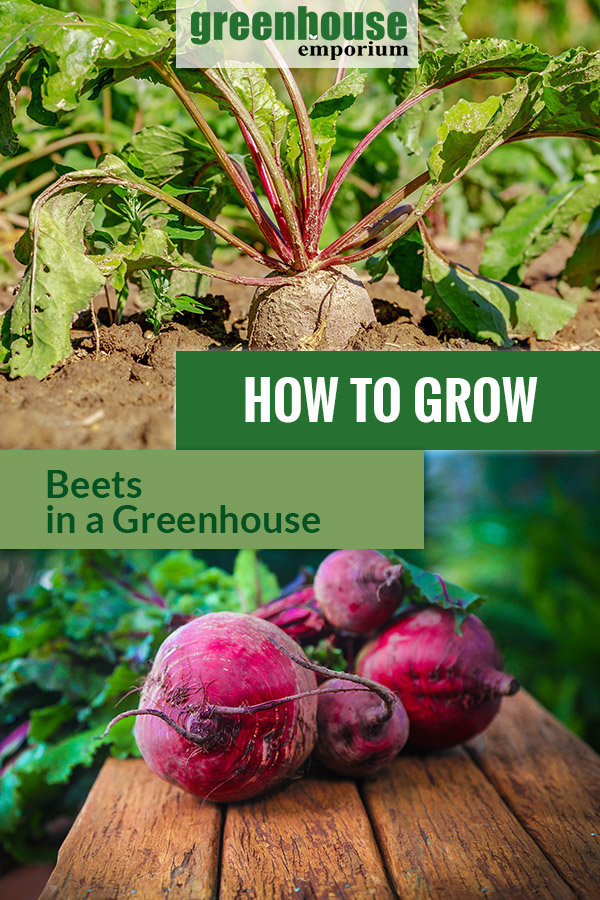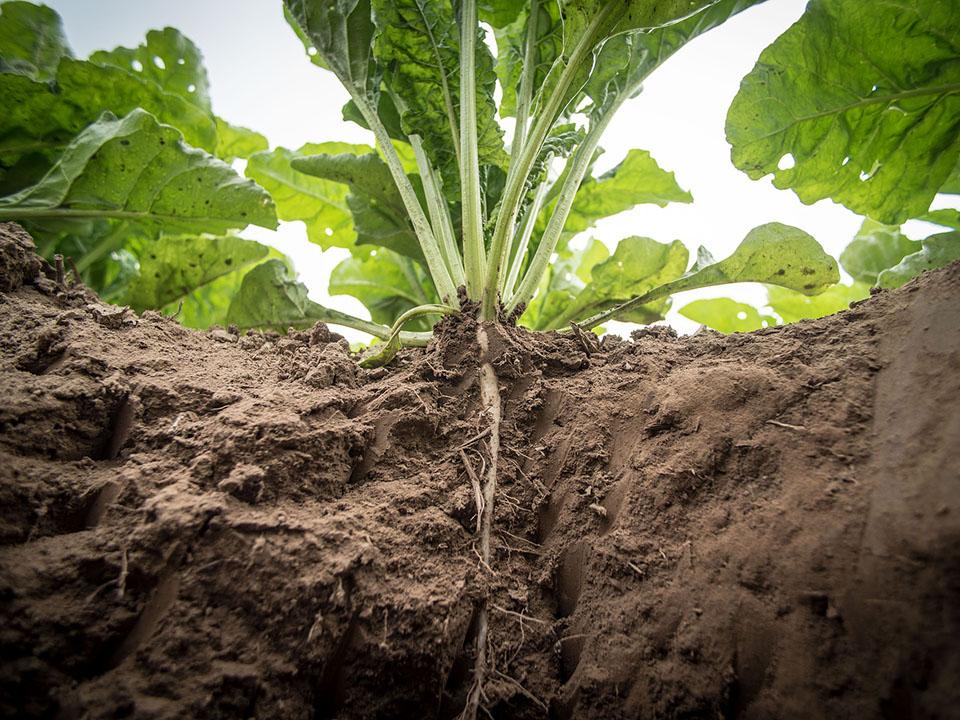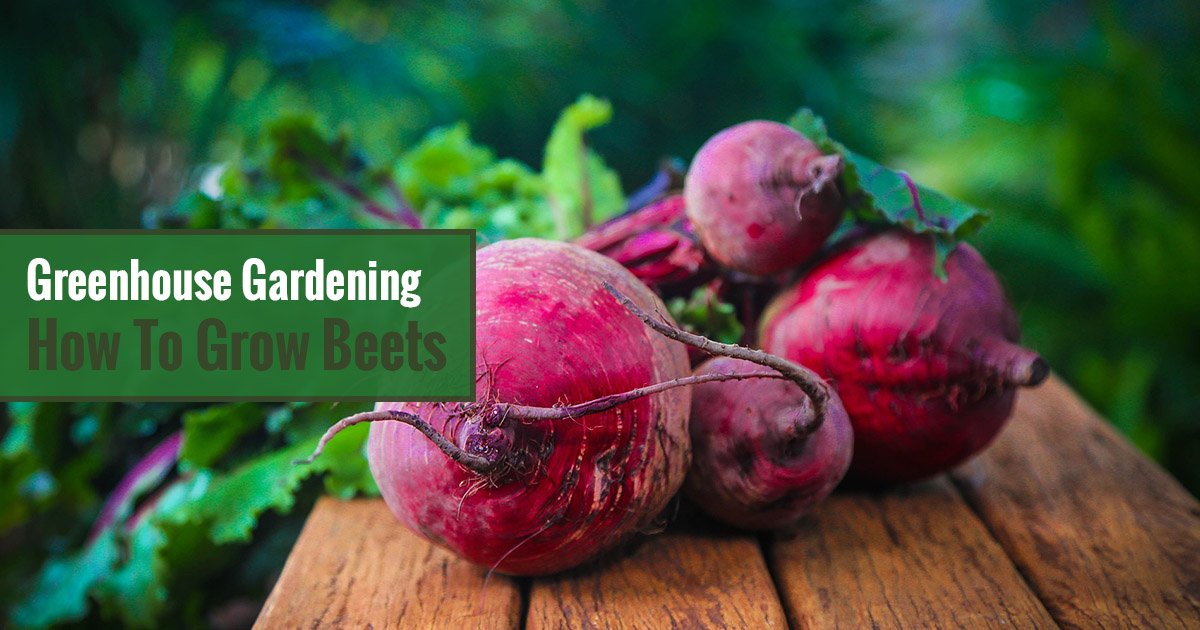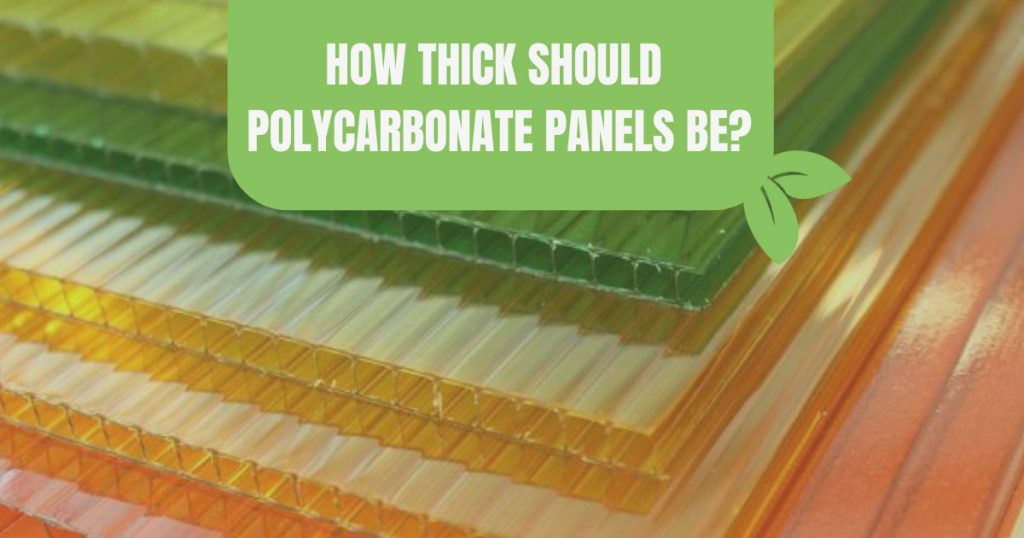



Beets are a versatile cool-season vegetable. They are deep red, white, or yellow bulbs of varying forms. They can withstand frost and nearly freezing colds, which makes them an excellent option for growers of all ages and a great long-season product. Let’s get started with learning more about this root vegetable and how to grow beets in a greenhouse.
Health benefits of beets
Beets are stuffed with essential vitamins and minerals but low in calories. They also have medicinal properties. Researches have confirmed that beets can naturally lower blood pressure by up to 4-10 mmHg over a span of just a few hours.

They are oftentimes used by athletes. It contains nitrates which are capable of building strength in your cells. Nitrates may also promote mental health and cognitive function by improving the dilation of blood vessels and therefore increasing blood flow to your brain.
Beets include dietary fiber which can improve digestive health. It prevents digestive conditions like inflammatory bowel disorder, constipation, and diverticulitis. The fiber in beets can help improve weight loss by decreasing your food cravings and increasing feelings of fullness, thereby lessening overall calorie absorption. If you would like to learn more about the health benefits of beets, read this.
Quick overview of growing beets in a greenhouse
- Type: Cool-season crop
- Time from seed to harvest: 50-70 days
- Germination temp: 50-85°F
- Time until first emergence: 5-8 days
- Best temp to grow: 60-75°F
- Height: 12-18 in
- Spread: 1-2 ft (plant in rows)
- Light: Full sun (6-8h)
- Grow from seed: 3/4-1 in deep, 1 in apart; rows 12-18in apart ; thin to 3-4in spacings
- Companions: Radish, broccoli, Brussels sprouts, beans, cabbage, kohlrabi
- Keep away from: Beans, mustard, chard
How to grow beets in a greenhouse
- Splash your seeds under warm water in a strainer until adequately damp around an hour before planting.
- If you are planting in rows, make sure to keep every row roughly four inches apart from each other.
- Top the seeds with 0.5 to 0.75 inches of soil.
- Thin the seedlings to stand from 1-2 inches apart.
- Do it from 10 to 14 days after seeing the sprout.
- Thin plants after one month to approximately four inches apart.
Basic soil conditions
The soil must be rich, loamy, and enhanced with loads of fertilizer or green manure and nitrogen for thriving beets. Never reduce phosphorus or potassium feed because these nutrients are essential for vigorous root increase. The truth is, beets are potassium lovers. Aim for pH levels between 6.5 to 7.5 somewhere in the middle within basic and acidic.
The soil must achieve a depth of at least eight inches to produce good-sized roots. The deeper the better.

Pest control tips
Beets are nearly disease and pest free. Even if it has some difficulties, they are still relatively effortless to control. The best advice is rotating crops of beets, Swiss chard, and spinach with other sorts of greens to prevent disease.
A reliable greenhouse kit greatly enhances your beets’ capability to resist common beet-loving pests and pets that particularly enjoy the opportunity to get your little sprouts.
Watering needs
Water completely after sowing so the topsoil can have a good soak but make sure not to water too much. Regularly monitor your beets if it needs to be watered. Try to dig in three inches close to your beets using your fingers. It should feel somewhat moist. If it is watery, stop watering. If it is dull, provide them with a slight soaking.
Be cautious not to wash off the soil. An overhead sprinkler or drip irrigation can easily be installed in your greenhouse. It is a safe approach to getting the soil wet without causing erosion. Use it for about ten minutes or so. That is long enough to provide them with the water they require. Check out these greenhouse watering systems to provide just the right amount of water to your beets.
Fertilizing your beets

If you are growing organic beets, compost, wood ashes, bone meal, and well-rotted manure all work safe, depending on the composition of your soil. You can set them into the soil before sowing.
Lighting and temperature requirement
Grow beets in a greenhouse with an open, well-draining soil and sunny position. Some early morning or late afternoon shade is good. Germination will occur in 5 to 10 days in an ideal greenhouse temperature if the soil is maintained moistened but drained.
Beets are cool weather crops that flourish wonderfully in mild temperatures about 60°F which is ideal for spring or fall. Anything colder than 45°F soil temperature may cause germination to proceed really slowly.
Harvesting beets
One of the best parts of growing beets is harvesting them. It can be harvested 45 to 65 days after sowing. If you started with merely a few beet seeds, you will be surprisingly sowing twice or even three times more.
























